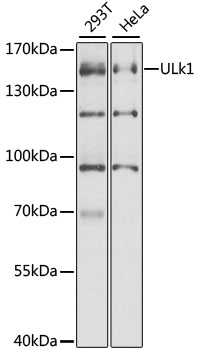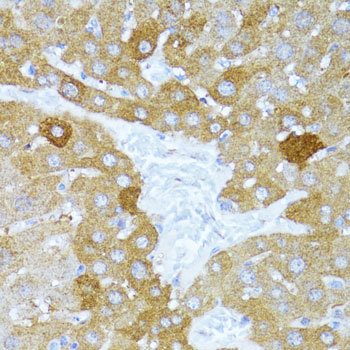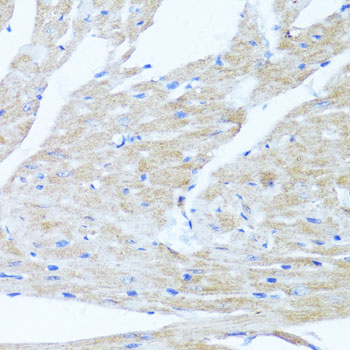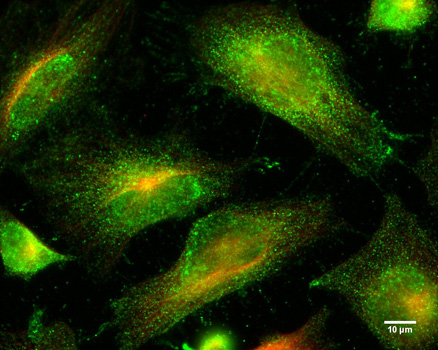-
Product Name
ULk1 Polyclonal Antibody
- Documents
-
Description
Polyclonal antibody to ULk1
-
Tested applications
WB, IHC, IF
-
Species reactivity
Human, Mouse, Rat
-
Alternative names
ULK1 antibody; ATG1 antibody; ATG1A antibody; UNC51 antibody; Unc51.1 antibody; hATG1 antibody; serine/threonine-protein kinase ULK1 antibody
-
Isotype
Rabbit IgG
-
Preparation
Antigen: Recombinant fusion protein containing a sequence corresponding to amino acids 400-499 of human ULk1 (NP_003556.1).
-
Clonality
Polyclonal
-
Formulation
PBS with 0.02% sodium azide, 50% glycerol, pH7.3.
-
Storage instructions
Store at -20℃. Avoid freeze / thaw cycles.
-
Applications
WB 1:500 - 1:1000
IHC 1:50 - 1:200
IF 1:10 - 1:100 -
Validations

Western blot - ULk1 Polyclonal Antibody
Western blot analysis of extracts of various cell lines, using ULK1 antibody at 1:1000 dilution.Secondary antibody: HRP Goat Anti-Rabbit IgG (H+L) at 1:10000 dilution.Lysates/proteins: 25ug per lane.Blocking buffer: 3% nonfat dry milk in TBST.Detection: ECL Basic Kit .Exposure time: 15s.

Immunohistochemistry - ULk1 Polyclonal Antibody
Immunohistochemistry of paraffin-embedded mouse liver using ULk1 antibody at dilution of 1:100 (40x lens).

Immunohistochemistry - ULk1 Polyclonal Antibody
Immunohistochemistry of paraffin-embedded mouse heart using ULk1 antibody at dilution of 1:100 (40x lens).

Immunofluorescence - ULk1 Polyclonal Antibody
Immunofluorescence analysis of A549 cells using ULk1 antibody .Green: ULK-1 protein stained by anti-ULK-1 antibody diluted at 1:300. Red: alpha-tubulin stained by monoclonal anti-tubulin antibody diluted at 1:100. Scale bar = 10 μm.
-
Background
Serine/threonine-protein kinase involved in autophagy in response to starvation. Acts upstream of phosphatidylinositol 3-kinase PIK3C3 to regulate the formation of autophagophores, the precursors of autophagosomes. Part of regulatory feedback loops in autophagy: acts both as a downstream effector and negative regulator of mammalian target of rapamycin complex 1 (mTORC1) via interaction with RPTOR. Activated via phosphorylation by AMPK and also acts as a regulator of AMPK by mediating phosphorylation of AMPK subunits PRKAA1, PRKAB2 and PRKAG1, leading to negatively regulate AMPK activity. May phosphorylate ATG13/KIAA0652 and RPTOR; however such data need additional evidences. Plays a role early in neuronal differentiation and is required for granule cell axon formation. May also phosphorylate SESN2 and SQSTM1 to regulate autophagy.
Related Products / Services
Please note: All products are "FOR RESEARCH USE ONLY AND ARE NOT INTENDED FOR DIAGNOSTIC OR THERAPEUTIC USE"
